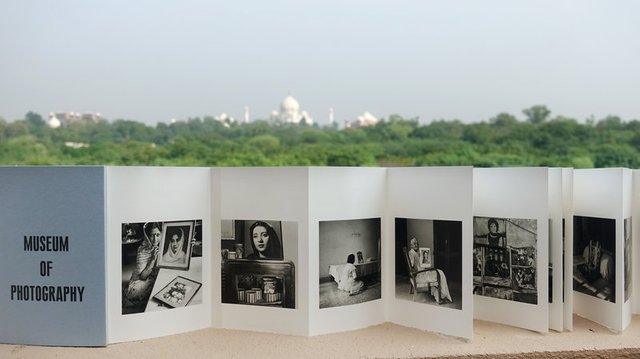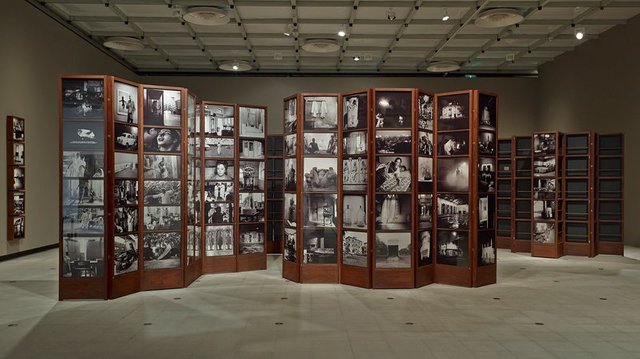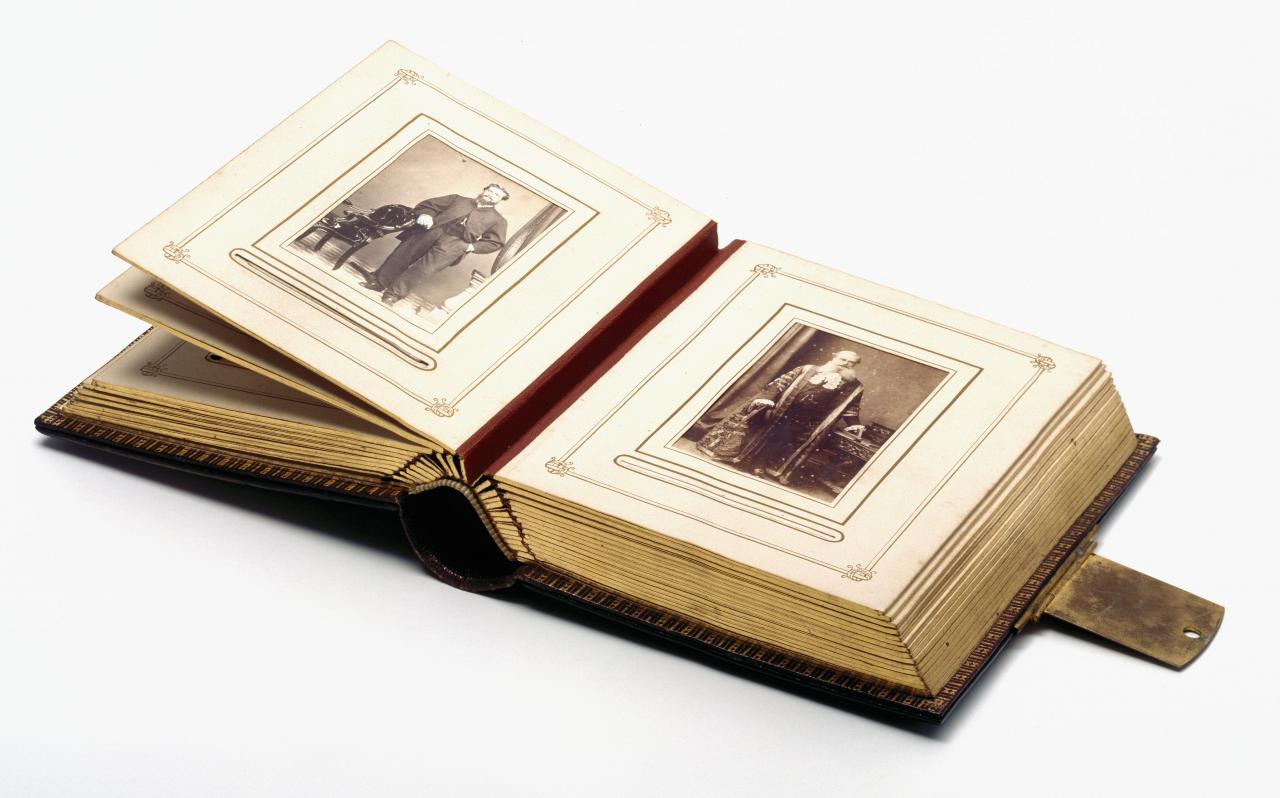Museum Bhavan: A Museum in Your Pocket
Disclaimer: This post is not about your iPhone.
In her newest work entitled Museum Bhavan, photographer Dayanita Singh created and published a portable museum: 9 accordion books that expand into a 7.5-foot-long "gallery" of photographs. She set out to recreate the experience of slowly leafing through an old family album.

Image courtesy of Bilal Qureshi, All Things Considered, NPR News.
A Museum Experience to Share
We've been discussing digital innovations for cultural institutions for a few weeks now. And rightly so. Museums, libraries, and other bastions of public history lag behind performance venues and fine art museums in digital exhibits and features of their institutions. However, in Museum Bhavan, Singh wanted to create an accessible and interactive tactile, physical exhibit. And while it probably can't actually fit in your pocket, it will fit in your living room. A space where you can more easily have conversations about the work, display it for your guests, and toy with its exact representation in your own home. As Singh says,
"Photography is such a magical form but it's gotten a little stunted," she says. "The most magical experience of photography is when it's in your hands, because it's here — you're touching it, you can hear it, you can smell it."

Singh's Museum of Chance exhibit allowed visitors to fold and reorganize panels to manipulate what photographs would be seen and hidden.
Public historians and curators of history museums utilize both digital and physical exhibits to create more sensory experiences of artifacts: ie allowing visitors to hold replication furs and weapons at the Museum of the American Revolution and other such interactive elements. How can we expand that experience to let people experience the museum at home and away from their screens?
Some questions to consider:
Often museums have "suitcase exhibits" that they bring to classrooms, nursing homes, and other places offsite to connect to more audiences. Do you have any suggestions for how to model Singh's exhibit instead? As in, how do we eliminate the messenger to let the public experience objects in a physical way within their own spaces?
What is the history museum equivalent of thumbing through a photo album? What are some experiences we can recreate or foster for people in the home using our artifacts?
100% of the SBD rewards from this #explore1918 post will support the Philadelphia History Initiative @phillyhistory. This crypto-experiment conducted by graduate courses at Temple University's Center for Public History and MLA Program, is exploring history and empowering education. Click here to learn more.
There may be something of an answer in the old carte-de-visite album:

@phillyhistory This is great! Do you know of any examples in Philly archives?
I guess the equivalent would be a physical catalog. Instead of browsing a museum's collections online, people could thumb through it like a photo album but with captions and pictures of artifacts. Of course this still is putting 3D objects into a 2D medium, which makes them less interesting and less useful. Plus it would be massively expensive to print catalogs and send them to everyone. Maybe a more practical option would be to make print catalogs for circulation among the public, either by neighborhood groups or libraries or schools or any organization which can be convinced to participate.
Yea, like somehow send them to the schools to get kids to look through and pick objects that they want to "exhibit" together and why. It's not as cool as being able to see or touch the objects (like what the photographer describes), but I like the idea of people feeling in control of how objects are presented to them/others.